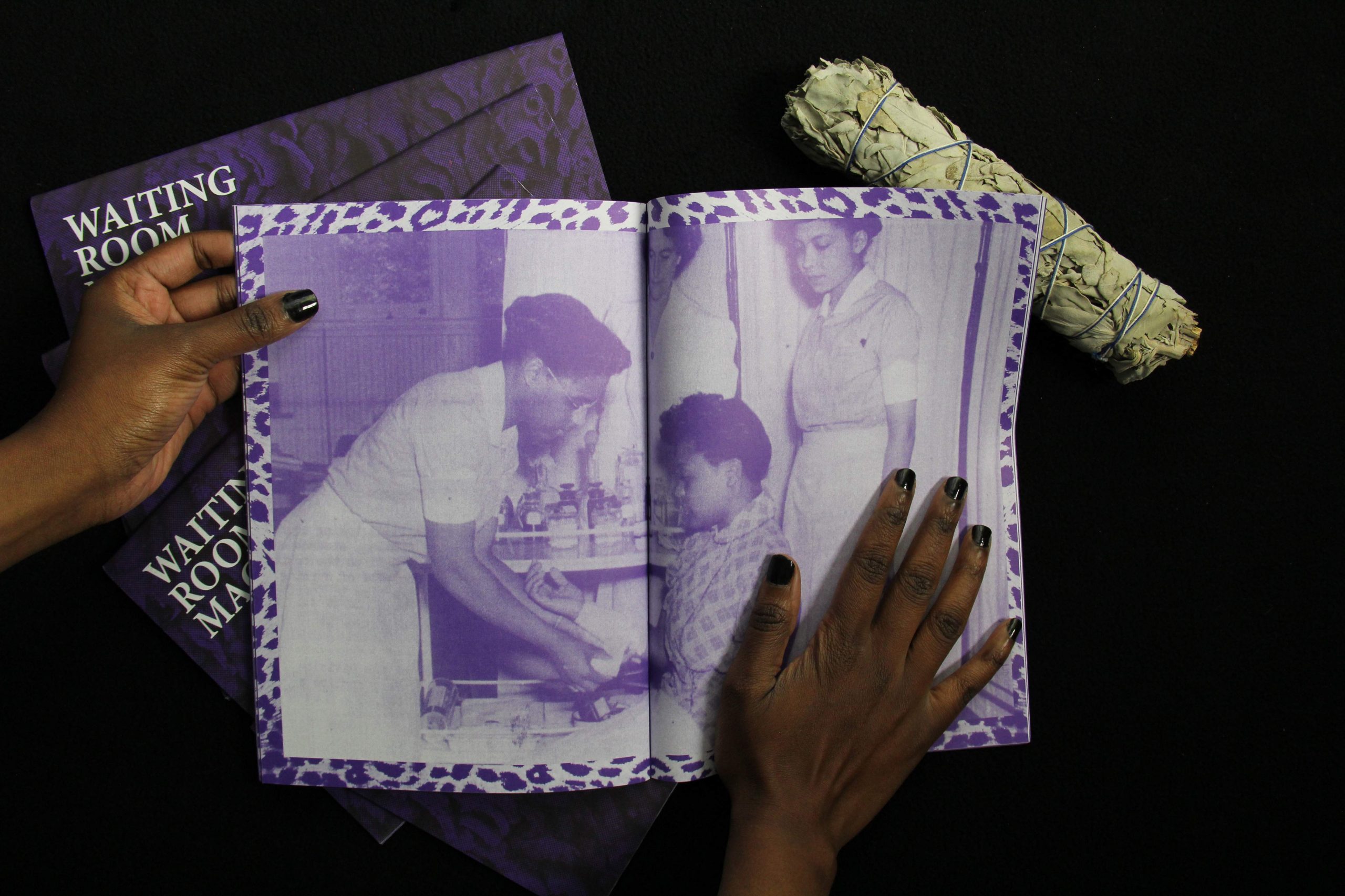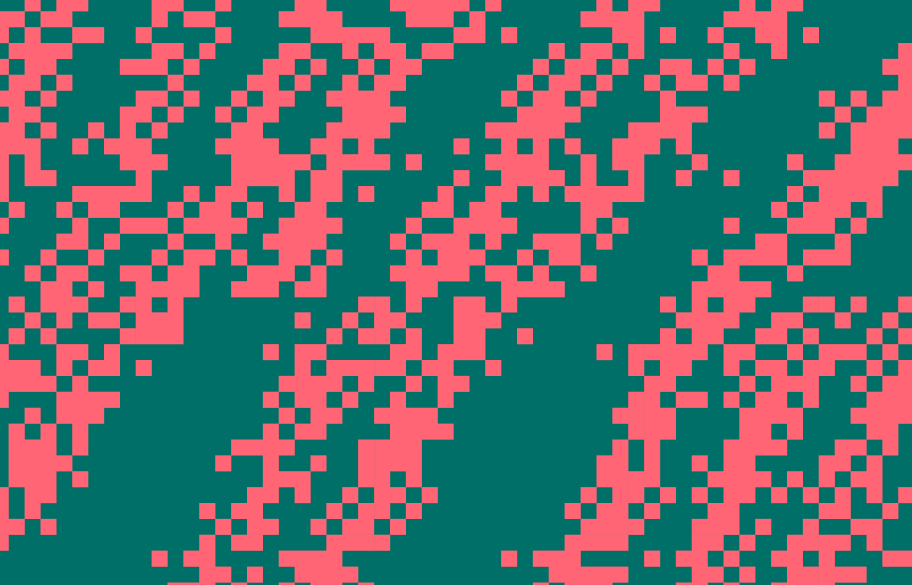Zimbabwe, Visual Arts, 2021
Nontsikelelo
Mutiti

Nontsikelelo Mutiti’s art practice is rooted in expanding modes of knowledge production. Through a conceptual approach to design, she draws on experimental publishing, archiving, collaborative, and public art practices to create art works and projects that mine vernacular knowledges and interrogate accepted hierarchies of knowledge production within the fields of art and design. Mutiti’s interdisciplinary art practice is possibly best exemplified by the unexpected poesis of an abandoned braid on a city sidewalk. A deceptively simple and everyday object, the lost braid opens up a series of concepts within cultural and mathematical epistemologies: questions surrounding its origin narrative; the complexity of its weave pattern; the creative and process-based labor invested in its creation; and its modular, repetitive, and rule-based graphic aesthetic with mathematics at the core.
An ongoing, multi-year research project titled Ruka (to knit, to braid, to weave) focuses on the hair braiding salon of the African diaspora as a communal site of knowledge production—through its sociability as well as through the braiding techniques that Mutiti views as a process analogous to language-making or the algorithms of coding. The project strives to open up new paths for thinking about Black histories and epistemologies. The resultant works include digital media, prints, publications, photographs, artworks, and found objects, which have been shown at the Metropolitan Museum of Art, the Studio Museum in Harlem, the Laundromat Project, RECESS, Printed Matter (all in the USA), and the Bubblegum Club (South Africa), amongst others, as well as most recently, a large-scale mural commissioned for STABLE in Washington, D.C.
This devotion to the celebration and elevation of Black American and African narratives and historiographies has propelled Mutiti’s collaborative works in publication, particularly those she produced with the late curator Bisi Silva and the many publications she made with renowned artist Simone Leigh, as well as publications for numerous art institutions. While Mutiti is invested in the importance of books as a format for knowledge production and for articulating Black epistemes, she is also critical of their potential as tools for control and disempowerment, and she highlights the dangers of their use to create hierarchies of knowledge, particularly in the context of her country of origin, Zimbabwe. Born in 1982, two years after independence from colonial rule, Mutiti reflects on how books and archives were used to program their readers by erasing local epistemologies and privileging only select forms of knowledge. This intellectual concern led to the creation of Black Chalk & Co., co-founded with Zimbabwean scholar Tinashe Mushakavanhu, which works as a platform for archiving and publishing practices to centralize Zimbabwean cultural and intellectual production. In addition to an extensive online archive titled “Reading Zimbabwe,” Black Chalk & Co. has published Home Means Nothing to Me, a zine produced in collaboration with Keleketla! Library (South Africa), and Some Writers Can Give You Two Heartbeats, a book of excerpts gathered from interviews with 150 Zimbabwean intellectuals.
These points of investigation have developed throughout Nontsikelelo Mutiti’s years of study at the Zimbabwe Institute of Digital Arts and the Yale School of Art, where she received her MFA in graphic design, as well as through her work as an educator, where she pushes her students and herself to interrogate the Eurocentric design canon and to prioritize alternative languages of visual meaning-building. Her practice is focused on producing a public sphere in which people can connect; she pursues this objective through her artwork and lectures, and also as the co-founder of spaces such as the Zimbabwe Cultural Center in Detroit (USA). All of these art, archival, and collaborative projects have been supported by institutions such as the Joan Mitchell Foundation, Open Society Foundation, Smithsonian Arts Research Fellowship, and the Knight Foundation, amongst many others.
When looking at the rigorous historical and intellectual work that Mutiti is making through the vector of visual art and design, one must return to the image of the tumble weave floating across the concrete sidewalk, and be reminded that there are great depths of information loaded in this single braid. As she has noted: “I think about the module. I think about what something can be reduced to and still be potent, and then what to do with that module when we repeat it. I think pattern exists in our lives—culture is a pattern, it’s a set of rules, and again, something that attracts me. My work with patterns is teaching me to think about what structure can do.”
Text: Nomaduma Rosa Masilela


